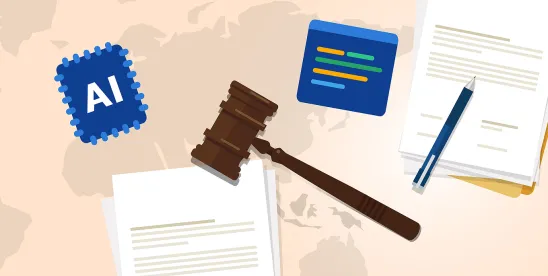The landscape of employment is undergoing a seismic shift as employers increasingly integrate technology, particularly artificial intelligence (AI), into workplace practices. AI workplace uses include a variety of applications, such as resume screening, employee monitoring software, and video interviewing tools that evaluate candidates’ performances. In light of this transformation, the United States Department of Labor (DOL) has issued new guidance, “Artificial Intelligence and Worker Well-Being: Principles and Best Practices for Developers and Employers.” While not legally binding, this guidance provides vital insights for employers seeking to responsibly implement AI in their decision-making processes.
The DOL’s Eight Principles for Responsible AI Use
In the new guidance, the DOL outlines eight key principles, each aimed at ensuring that the deployment of AI systems enhances worker empowerment, equity, and well-being.
1. Centering Worker Empowerment
The DOL emphasizes the importance of integrating feedback from workers. Employers are encouraged to involve employees, especially those from “underserved communities” in every phase of AI system development, from design to oversight. For unionized workplaces, good faith negotiations with employee representatives regarding AI and electronic monitoring are crucial.
2. Ethically Developing AI
The DOL advocates for the creation of AI systems that uphold civil rights and promote safety and equity. Developers should rigorously test AI models for accuracy, validity, and reliability to avoid biases. Furthermore, the guidance encourages developers to carry out impact assessments, develop systems that ensure human oversight, guarantee quality job opportunities for data reviewers, and create AI that generates results easily understood by non-technical users.
3. Establishing AI Governance and Human Oversight
The DOL recommends that employers consider implementing governing structures that oversee AI implementation, ensuring that human oversight remains central to employment-related decisions. In other words, employers should not rely solely on AI when making significant employment decisions such as hiring, firing, and demoting an employee. The guidance also recommends regular independent audits of these AI systems to maintain accountability.
4. Ensuring Transparency in AI Use
The DOL advises employers to notify workers about AI utilization in advance. Additionally, employers should establish procedures that allow workers to request, access, and amend their data used in employment-related decisions.
5. Protecting Labor and Employment Rights
Just like any other workplace practice, AI systems should not jeopardize workers’ rights to organize or infringe upon protections related to health, safety, wages, and anti-discrimination. The DOL encourages employers to consider applicable laws (including, but not limited to, the Family and Medical Leave Act, Occupational Safety and Health Act, Fair Labor Standards Act, etc.) and regulations when implementing AI.
6. Using AI to Enable Workers
The DOL believes that AI should be utilized to support and enhance workers, thereby improving job quality (i.e., automating mundane tasks and therefore allowing workers to focus on more meaningful work). Employers should therefore consider conducting pilot programs for AI systems prior to widespread implementation and strive to limit invasive electronic monitoring.
7. Supporting Workers Impacted by AI
When AI systems lead to changes in the workforce or worker displacement, employers must ensure that workers receive appropriate training to adapt to new technologies (i.e., hands-on practice with the new technology, video tutorials, etc.). The DOL believes that the retraining and reallocating of affected employees should be prioritized whenever possible.
8. Ensuring Responsible Use of Worker Data
The DOL urges developers to incorporate robust safeguards (i.e., firewalls, intrusion detection systems, etc.) to protect worker data from both internal and external threats. Furthermore, organizations should avoid collecting and retaining worker data that is unnecessary for legitimate business purposes.
Key Takeaways for Employers
While the DOL’s guidance is not legally binding, it offers important perspectives on how the DOL might enforce existing laws related to the use of the AI in the workplace. Employers should take this opportunity to look at the recommendations and consider incorporating these strategies into their policies and practices.





 />i
/>i

